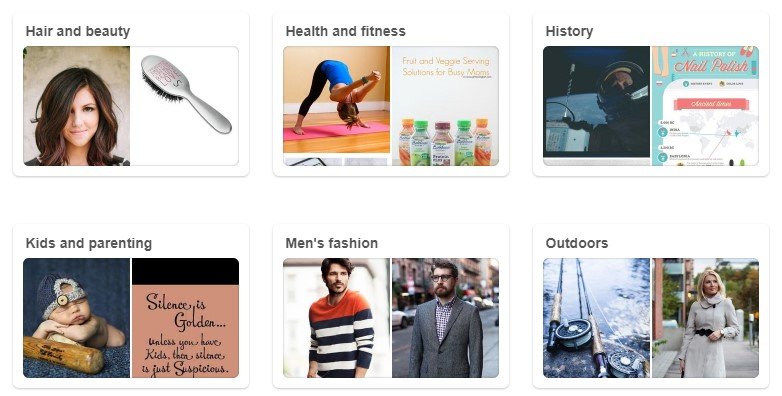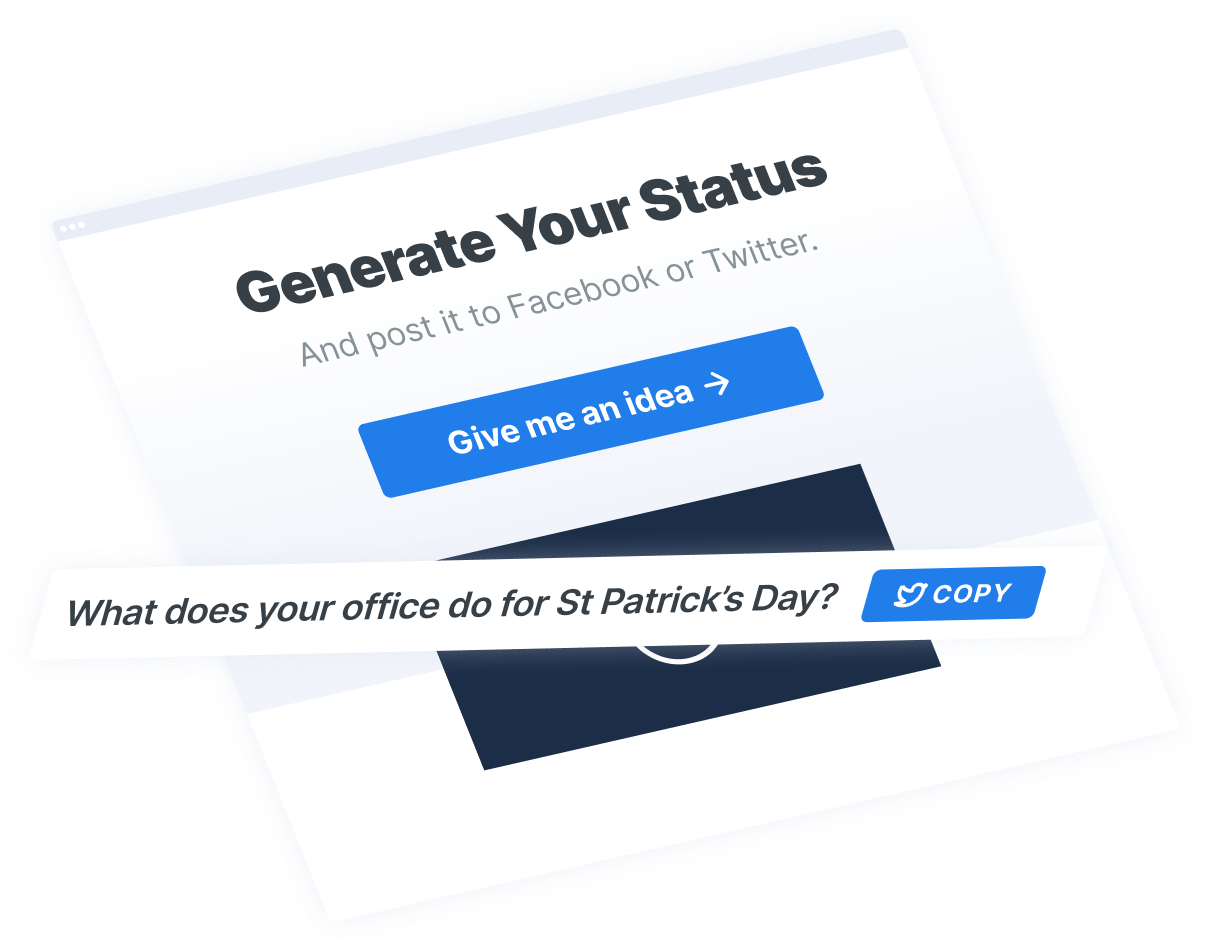- Home
- Blog
- Social Media
- A Taste of Pinterest’s New Targeting Options
A Taste of Pinterest’s New Targeting Options
-
 8 min. read
8 min. read
-
 Nicole Knisley
Nicole Knisley Content Writer
Content Writer
- Nicole is an Internet Marketing Consultant at WebFX with a specialty in Conversion & UX. She has a B.S. in Marketing and Hospitality Marketing. When she’s not increasing website conversion rates, you can find her eating pasta, practicing yoga, or playing with her Samoyed. Follow her on Instagram @nikkibeave.
Try to list 400 different hobbies and interests. A few might come to mind immediately, like photography, music, reading, or sports, but it would take some deeper thinking to come up with 400 unique categories. Now try to list 5,000. That’s exactly what Pinterest did – using algorithms, of course! – with their new Taste Graph. Previously, Pinterest offered about 400 different interests for users to choose from, organized into 29 broader categories ranging from hair and beauty to kids and parenting to the outdoors.
 After choosing a category, the options get even more specific. The hair and beauty category, for instance, narrows down to areas of interest like hair, makeup, nails, hair products, and makeup tools.
After choosing a category, the options get even more specific. The hair and beauty category, for instance, narrows down to areas of interest like hair, makeup, nails, hair products, and makeup tools.  This not only allows users to see the content they care about, but also allows advertisers to create extremely targeted ads.
This not only allows users to see the content they care about, but also allows advertisers to create extremely targeted ads.
And with the release of The Pinterest Taste Graph, the number of unique interests available to target increased by more than 10 times to create 5,000 different options. These new interest options are the result of indexing over 100 billion pins, and they can help your business reach users on the platform more effectively than ever.
The benefits of Taste Graph for marketers
Advertising to niche markets on Pinterest definitely has its benefits. Not only is it possible to reach consumers more directly, but it is also much more cost-effective than advertising to broader audiences. Here are a few of the benefits of advertising using the Taste Graph:
1. More targeted ads
Now that Pinterest reaches over 200 million users each month, it’s becoming an increasingly valuable marketing channel. But trying to advertise to their entire user base will likely result in wasted ad spend – which is where these 5,000 specific interests become useful.
You can pick and choose which interest groups you want to show your ads to, meaning less wasted advertising dollars. Imagine that your company sells a yoga prop designed to be used while sitting in a desk chair to stretch your back.
Previously, you would have to target those who enjoy yoga and exercise as well as those who are interested in business. In this case, you’d be reaching potential customers by targeting both groups. However, you’d also be showing your ad (and paying for it) to those who like yoga, but don’t sit at a desk at work and those who do work at a desk, but have no desire to use a yoga prop.
Upping the number of interests to 5,000 opens up the possibility of more unique and specific interest combinations – like the new desk yoga option.
 This way, users see more of what they want and advertisers can target smaller, more qualified audiences.
This way, users see more of what they want and advertisers can target smaller, more qualified audiences.
2. Increased CTR & decreased CPC
In addition to wasting less money by not showing ads to non-interested users, targeting a more specific audience can greatly increase your ad’s clickthrough rate, or CTR. Your ads will be more relevant than ever when shown to a small, niche audience who truly has an interest in what your company is offering. As a result, your ads will likely receive more clicks for fewer impressions, increasing the CTR.
In fact, Pinterest Product Manager, John Milinovich, said, “In early tests, many advertisers are seeing 50% increases in their click-through rates, and 20% more cost-effective clicks.” So, targeted Pinterest ads are simultaneously seeing an increase in CTR and a decrease in cost per click, or CPC.
3. Better user experience
The more relevant your ads are to a user’s interests, the more positive their reaction will be. Because they’ve expressed interest in a specific category or product, they will be less bothered by seeing your ads. In fact, most users expect to see ads related to the area of interest they are browsing.
The ads look similar to other Pinterest posts, so placing an ad within a targeted niche will allow it to fit in with the rest of the content on the page and generate user engagement.
4. Less competition
Another benefit of targeting a smaller, niche audience is less competition. Think back to desk yoga scenario – There may be lots of advertisers targeting yoga enthusiasts and many more going after business people. But, how many are targeting people who want to do yoga while sitting at a desk?
Probably not too many. With fewer advertisers fighting over ad space, your ad is more likely to be shown more often. It’s hard to stand out in a sea of thousands of ads – but if you’re competing with a smaller pool of advertisers, your ad will have a much higher visibility.
The more narrowed down your target audience becomes, the less competition you will have.
Which interests should you target?
With over 5,000 interest options available in Pinterest’s Taste Graph, figuring out which ones to target with your ads to can be overwhelming. So, how do you find your audience on the platform? Here’s what you can do:
1. Create buyer personas
Look at the people who you know are your current customers and really analyze them. Maybe you already know your average buyer is a male between the ages of 35 and 49 with an average annual income of $85,000 – but you’ll need to dig deeper and figure out as much as you can, beyond basic demographics. Some good questions to consider are:
- What is my customer’s job title? Do they work in an office? Do they work during the day or are they typically night shift?
Do they work from home? Do they travel for business?
- What sports might my customer play? Do they go to the gym? Do they prefer to watch sports?
Do they like to run, swim, or ride a bike?
- What hobbies do my customers enjoy? Do they like to cook? Do they enjoy making crafts?
Do they like photography? Do they go to wineries? How do they spend their time outside of work?
- What events do my customers go to? Do they like to go to concerts? Do they watch musicals?
Do they attend car shows? Do they go to local fairs and festivals?
- Do they have kids? Do they have pets? Do they have nice cars?
Do they own homes? Do they live in apartments? What do they watch on TV?
The list goes on, but asking a few of these questions can really help you understand who your customers are, outside of your business. For some people, writing up an actual customer persona helps them understand their customers better. For example, your buyer persona might be Susan, 45 years old, works at a retail store in a shopping mall, enjoys learning new recipes and biking to work.
It’s fairly simple, but it offers some insight into the everyday lives of your buyers. Buying your product or service is just one of the many things that make up your customer persona – it’s up to you to figure out the rest. You can also try our free persona generator to help you get started!
2. Look at your best web content
Another way to narrow down your customers’ interests is to look at the top-performing content on your website. Google Analytics can assist you with this, but you’re ultimately trying to figure out what your consumers are most interested in. Perhaps you wrote a blog post about something in the news that your audience really enjoyed, or published information about a specific product or service you offer.
Finding out what they like on your site can uncover some of their other interests.
3. Use Google Analytics
Not only can Google Analytics offer insight on your best performing web content, it also captures information about user interests – the exact thing you’re trying to figure out! Google collects data on logged-in users, and Analytics presents that data in an easy-to-understand format. Check out the Interests section of Google Analytics to find out more about your buyers.
4. Analyze your social media accounts
Digging into your social media analytics can provide you with information about your audience, like what music they listen to, what books they read, where they work, and more. Looking at your in-platform analytics can round out your buyer personas and give you a deeper understanding of which interests you should target. Combining these methods will give you a good overall picture of what your target audience enjoys and what their interests are.
Once you find that out, search Pinterest’s Taste Graph for the corresponding interests – because chances are pretty high they’ll be included in those 5,000 options. It’s also important to note that the Taste Graph is constantly being refined. Every time someone makes a new pin, Pinterest understands them a little more.
So, not only will user interests become increasingly defined, but The Pinterest Taste Graph will continue to expand to encapsulate all of their users.
The Pinterest Taste Graph will become available over the next few weeks through Pinterest Ads Manager, Pinterest Marketing Partners, or Pinterest Account Manager. Start figuring out your customer base’s interests today, so you’re ahead of the game when all 5,000 targeting options are released!
Want to know more?
Our marketing experts at WebFX are here to help! Just give us a call at 888-601-5359 to speak with a strategist or contact us online to get started!
-
 Nicole is an Internet Marketing Consultant at WebFX with a specialty in Conversion & UX. She has a B.S. in Marketing and Hospitality Marketing. When she’s not increasing website conversion rates, you can find her eating pasta, practicing yoga, or playing with her Samoyed. Follow her on Instagram @nikkibeave.
Nicole is an Internet Marketing Consultant at WebFX with a specialty in Conversion & UX. She has a B.S. in Marketing and Hospitality Marketing. When she’s not increasing website conversion rates, you can find her eating pasta, practicing yoga, or playing with her Samoyed. Follow her on Instagram @nikkibeave. -

WebFX is a full-service marketing agency with 1,100+ client reviews and a 4.9-star rating on Clutch! Find out how our expert team and revenue-accelerating tech can drive results for you! Learn more
Twitter and Facebook Status Generator
Finding engaging social media content for your business can be difficult. Use our tool to quickly find ideas and post directly to your page.
Give Me an Idea

Social Media Success Story

Proven Marketing Strategies
Twitter and Facebook Status Generator
Finding engaging social media content for your business can be difficult. Use our tool to quickly find ideas and post directly to your page.
Give Me an Idea
What to read next





